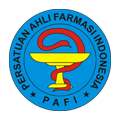Manajemen Discharge Planning pada Klien dengan Demam Berdarah Dengue (DBD)
DOI:
https://doi.org/10.26630/jk.v10i2.1330Keywords:
Absolute discharge, Dengue Hemorrhagic Fever, Discharge planning, EducationAbstract
The role of nurses is very important, in discharge planning. Discharge planning is performed in all diseases to e the clients of the illness as well as the recovery of the patient after discharge from the hospital. One of them are patients with Dengue Hemorrhagic Fever (DHF). Discharge planning for DHF patient can be done by providing health education. Some studies find that discharge planning is in intermediate achievement because some factors such as formal education and age that affect maturity in thinking and acting. The purpose of this study is to describe the ability of nurses to perform discharge planning to a patient with DHF. This is qualitative research, the population in this study is nurses who are assigned to care DHF patient in Ambarawa Hospital. Data collected by semi-structured interview and validated by member check method. The results showed that discharge planning applied in Ambarawa Hospital was absolute discharge, and also discharge planning to DHF clients in Ambarawa Hospital was not effective yet because nurses did not know the number of dengue cases that should be reported in whole to the Health District Office. It is because the standard of success applying discharge planning depends on the reporting of DHF cases as a whole. To be concluded, delivering education must pay attention to three important aspects namely structure, culture, and technology.Â
References
Devi Darliana. (2012). Discharge Planning Dalam Keperawatan. Idea Nursing Journal Vol.III No.2.
Dinas Kesehatan Jawa Tengah. (2015). Profil Kesehatan Provinsi Jawa Tengah.
Herniyatun, Nurlaila., & Sudaryani. (2009). Efektifitas program discharge
planning terhadap tingkat kepuasan pasien di Rumah Sakit Umum Daerah
Kabupaten Kebumen Tahun 2009. Jurnal Ilmiah Kesehatan Keperawatan.
Lestari, E. D. W. I., Studi, P., & Keperawatan, I. (2010). Hubungan tingkat pemahaman tentang discharge planning dengan kepatuhan pasien dalam penatalaksanaan diabetes. Naskah Publikasi, STIKES Aisyiyah Yogyakarta.
Nazri, C. ., Hashim, A., Rodziah, I., & Hassan, A.Y. (2013). Utilization of geoinformationtools for dengue control managementstrategy: a case study in Seberang Prai, Penang Malaysia. International Journal of Remote Sensing Applications, 3(1), 11-17.
Nursalam, Ariyanto. (2013). Pedoman Penyelengaraan Pelayanan Keperawatan di Rumah Sakit. Jakarta: Direkorat Pelayanan.
Nursalam. (2007). Managemen keperawatan: Aplikasi dalam Praktek keperawatan profesional. Jakarta: Salemba Medika.
PERMENKES. (2014). Panduan praktik klinis bagi dokter di fasilitas pelayanan kesehatan primer.
https://peraturan.bkpm.go.id/jdih/userfiles/batang/Permenkes_5_2014.pdf
Purnamasari, L. D., & Ropyanto, C. B. (2012). Evaluasi Pelaksanaan Perencanaan Pulang. Jurnal Keperawatan Diponegoro, 1(1), 213-218.
PUSDATIN. (2013). Situasi demam berdarah dengue di indonesia.
www.depkes.go.id/article/print/.../wilayah-klb-dbd-ada-di-11-provinsi.html%0A%0A
Rafif, Naufal. (2018). Perbedaan Manifestasi Klinis Penyakit Pada Pasien Demam Berdarah Dengue Infeksi Primer Dan Sekunder. (Skripsi, Universitas Lampung).
Rofi’i, M. (2011). Analisis faktor-faktor yang mempengaruhi pelaksanaan perencanaan pulang pada perawat di Rumah Sakit Islam Sultan Agung Semarang. (Tesis, Universitas Indonesia).
Siahaan, M.S.U. (2010). Penatalaksanaan TB Paru Rumah Sakit Umum Daerah Sidikalang Tahun 2010. (Skripsi, Universitas Sumatera Utara). Medan
Suprapti, E., Nur, T., & Madya, K. (2013). Pengaruh Discharge Planning Terstruktur Untuk Meningkatkan Kesiapan Pasien TB Paru Menghadapi Pemulangan (Studi Eksperimental di RSUD Tugurejo Dan RSUD Kota Semarang ). Jurnal Ilmu Keperawatan dan Kebidanan, 9(1).
WHO. (2012). Dengue and Severe Dengue. http://www.who.int/mediacentre/factsheets
/fs117/en/
Wijayanti, A. E., & Kusumawati, A. S. (2014). Gambaran Stres Mahasiswa Terhadap Prestasi Belajar Mahasiswa Keperawatan. Pelaksanaan Discharge Planning pada Pasien Post Sectio Caesaria. Jurnal Unisa Yogyakarta. http://digilib.unisayogya.ac.id/2344/1/4jurnal%20JKK%20-desember14%20OK.pdf#page=30
Wowor, R. (2017). Pengaruh kesehatan lingkungan terhadap perubahan epidemiologi demam berdarah di Indonesia. Jurnal E-Clinic, 5(2).
Downloads
Published
Issue
Section
License
Authors who publish in this journal agree to the following terms:
- Authors retain copyright and grant the journal right of first publication with the work simultaneously licensed under a Creative Commons Attribution License (CC BY-SA 4.0) that allows others to share the work with an acknowledgment of the work's authorship and initial publication in this journal.
- Authors can enter into separate, additional contractual arrangements for the non-exclusive distribution of the journal's published version of the work (e.g., post it to an institutional repository or publish it in a book), with an acknowledgment of its initial publication in this journal.
- Authors are permitted and encouraged to post their work online (e.g., in institutional repositories or on their website) prior to and during the submission process, as it can lead to productive exchanges, as well as earlier and greater citation of published work.















